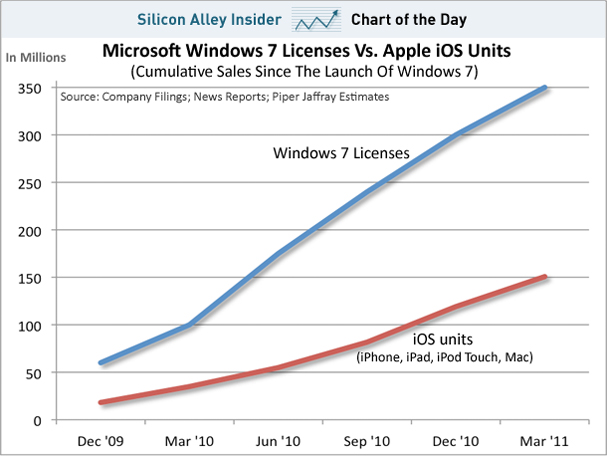29 Jan 2012 :
tech
That the integrated OCR engine, that ships with DevonThink Pro Office is only the single-core version is known - it’s due to licensing issues and DevonThink would have to charge a lot more if they made available the multi-core version.
I wanted to know, if the Abby FineReader which ships with the Fujitsu ScanSnap S1300M utilizes the multi-core capability. So I ran some tests.
Though I dont’t think, it uses multiple cores, I found the ScanSnap to be 4x faster.
For a 2,5 pages document, the ‘normal’ workflow (use the built-in OCR of DT) takes a lot more time compared to a slightly different workflow, where the OCR is done by the ScanSnap software. The actual result for the OCR job where 48 seconds vs. 12 seconds.
The caveat is, that this approach doesn’t have the queue feature, that DT has, so that it’ll have to finish the OCR process before you can feed it the next document. But since the OCR is 4 times faster, this is a minor one, since it will increase your overall throughput.
If you want to follow this, just check “convert to searchable PDF” in the in the profile settings in ScanSnap. Then uncheck the same in the DevonThink Pro Office preferences.
22 Oct 2011 :
howto,
os_x,
cacti
After upgrading my cacti server to Mac OS X Lion, the graphs in my Cacti installation needed a very long time to render and the CPU usage of rrdtool spiked – somehow blocking the whole machine.
The rrdtool which is needed by cacti has been installed via Fink, which is a fine project maintaining all the usual *nix tools, that don’t come with Mac OS X. Fink gives you the convenience of a Debian package manager and makes installing additional software a breeze.
Because I didn’t know exactly which program was responsible for the slow rendering, I dumped the whole fink tree which is normally located at /sw and started over with a fresh install. After fink completed all the compiling an installation I had a fast cacti again. Since I didn’t update the fink packages regulary, I was sure, that some bugfixes in the newer versions resolved the slowness problem.
After the recent update of Lion to 10.7.2, I had to realize, that the rendering was totally slow again. So I thought, that an update of rrdtool and the other needed tools should do the trick again. Unfortunately there was no newer version of the tools as those which where already installed.
After trying some things (which didn’t help), I looked for a way to circumvent the dump-everything-and-spend-another-two-hours-reinstalling thing. Since there was no newer version for 10.7.2, there must be a different cause.
I figured out, that one of the following tools had to be the offending one:
- librrd4-shlibs
- rrdtool
- pango1-xft2-ft219 (dev, shlibs & the main one)
- freetype219 (main & shlibs)
- fontconfig2
So find their package name and remove them (example for ‘freetype’):

When you delete or remove a package via fink and then reinstall it again, fink makes use of the binary packages it produced during the former installation. (I tried the command-line switches to avoid this behaviour but had no luck.)
What helped, was to delete the packages from the cache directories (on my system this is at /sw/fink/10.7/stable/main/binary-darwin-x86_64/) and starting the fink install command again.
I think it’s safe to delete them all:

fink grabs the source and – since the binary package is no longer available – compiles everything from scratch.
Install the packages. It’s best to start with the main package (the one you were initially interested in), because the package management of fink will install additional ones automatically when needed:

After that, the rrdtool graph rendering was fast again. So my conclusion is, that even during minor updates of Mac OS X, underlying things can change that way, that programs don’t work as expected, if they were compiled on a different version of the system.
So, if your tools behave different after an update or upgrade, try a fresh compile of them first.
01 May 2011 :
video,
fun
Herrlich. Hat Paul McCartney früher Auto-Sendungen moderiert?

(Via FAILBlog)
28 Apr 2011 :
biz,
apple
Das ansonsten recht informative “Chart of the Day” von businessinsider.com beschäftigte sich jüngst mit einem eher merkwürdigen Vergleich und stellt darin die Anzahl verkaufter Windows 7 Lizenzen den “iOS units” gegenüber, die im entsprechenden Zeitraum verkauft wurden:

Wobei mir nicht mal klar ist, was “iOS units” überhaupt sein sollen, da laut Legende Macs mitgezählt wurden, diese jedoch definitiv nicht mit iOS laufen…
Diese kleine Unschärfe mal beiseite gelassen, bleibt die Frage, was der Vergleich überhaupt soll. Die wesentliche (einzige) “Ableitung”, die getroffen wird, lautet:
For all of its mind-blowing success, sales of Apple’s computing products are still just a fraction of Microsoft’s Windows 7 licenses.
Und? Hier wird doch nicht etwa der Verkauf einer neuen Software für eine installierte Basis von über 1 Milliarde PCs mit Verkäufen von iPhones, iPads und iPod touch Geräten verglichen? Mit einer Plattform, die vor drei Jahren bei Null gestartet ist? Kann ich mir nicht vorstellen – das wäre ja so, als würde man verkaufte Liter Heizöl mit der Anzahl errichteter Windkraftanlagen vergleichen. Würde ja niemand machen. Genauso wenig, wie niemand die Frage stellen würde, warum nach 1,5 Jahren gerade mal ein Drittel der Nutzer auf die angeblich so ersehnte neue Version gewechselt ist. Zur Erinnerung: lässt man das komplett gescheiterte Vista mal ausser Acht, wurde das letzte (halbwegs) brauchbare Microsoft System – Windows XP – vor gut zehn Jahren (!) auf den Markt gebracht. Da braucht es schon schräge Vergleiche, um das als Erfolg werten zu können…
Kopfschüttel…
26 Apr 2011 :
tech,
privacy
Es ist ein Drama. Vor sechs Tagen wurde in die Server ‘eingebrochen’, die das Playstation-Network (PSN) hosten. Über das PSN werden Updates und Spiele-Demos verteilt, Spielstände verwaltet und Nachrichten ausgetauscht. Ausserdem beherbergt das PSN den Playstation-Store, in dem man Spiele, Musik und Filme kaufen kann. Seitdem ist das PSN offline und Sony geht davon aus, dass “in einer Woche” (!) der Betrieb wieder aufgenommen werden kann. Heute meldete sich Sony mit einem Update.
Valued PlayStation Network/Qriocity Customer:
We have discovered that between April 17 and April 19, 2011, certain PlayStation Network and Qriocity service user account information was compromised in connection with an illegal and unauthorized intrusion into our network.
Eine Woche nachdem die Sony-Experten den Einbruch festgestellt haben, informieren sie nun die über 75 Millionen Nutzer des PSN, dass manglaube, dass sämtliche Daten geklaut wurden:
[…] we believe that an unauthorized person has obtained the following information that you provided: name, address (city, state, zip), country, email address, birthdate, PlayStation Network/Qriocity password and login, and handle/PSN online ID. It is also possible that your profile data, including purchase history and billing address (city, state, zip), and your PlayStation Network/Qriocity password security answers […]
Nahezu niedlich ist die Umschreibung unauthorized person – klingt hier irgendwie nach Strauchdieb oder Tunichtgut, der eine Cola-Dose in die falsche Recyclingtonne geworfen hat. Es geht aber um den Verlust von Passwörtern, Online-Identitäten, Mail-Adressen, Kauf-Historien… Damit nicht genug; weiter unten kommt dann noch eine nicht unwesentliche Ergänzung:
If you have provided your credit card data through PlayStation Network or Qriocity, out of an abundance of caution we are advising you that your credit card number (excluding security code) and expiration date may have been obtained.
Das ist der Super-GAU. Einer der größten Diebstähle überhaupt – es geht um Millionen, wahrscheinlich zig Millionen Kreditkartendaten. Katastrophal ist, dass Sony erst eine Woche nach der Attacke mit dieser Information rausrückt und damit selbst zu verantworten hat, wenn diese Daten nun missbraucht werden.
Sony takes information protection very seriously and [blafasel]
Eine Aussage, die PR-mäßig natürlich nicht fehlen darf, aber angesichts der Tragweite und des inkompetenten Verhaltens von Sony nichts als blanker Hohn.
Allein die Tatsache, dass Sony schon am Tag nach dem Vorfall verkündet hat, das bisherige System komplett stillzulegen und durch ein neues zu ersetzen, spricht Bände. Offensichtlich war den Betreibern bewusst, dass das PSN nicht sicher war:
[…] strengthen our network infrastructure by re-building our system to provide you with greater protection of your personal information […]
Damit dürfte ‘leichte Fahrlässigkeit’ aus’m Spiel sein; bin gespannt, mit welchen Klagen Sony jetzt überzogen wird. Bleibt zu hoffen, dass Sony die ganze Angelegenheit genau so ernst nimmt, wie sie noch vor wenigen Wochen alles unternommen haben, um George Hotz (aka GeoHot) zur Strecke zu bringen. Da hatte der Elektronik-Gigant gerichtlich die Herausgabe der IP-Adressen von Website-Besuchern und Youtube-Nutzern erwirkt.
Eines macht der Fall zudem noch mal klar: Kundendaten sind ein sehr wertvolles Gut – Firmen ermöglichen sie ‘nur’ die Geschäfte, aber für die Kunden sind sie Teil der Existenz, die sie vertrauensvoll in fremde Hände legen. Dieses Vertrauen nicht zu enttäuschen ist sicherlich eine der obersten Aufgaben. Ob es nun der wichtige OS-Patch, das geeignete Passwort oder die nochmal geprüfte Verarbeitung von Formular-Daten ist – täglich und überall gilt es, Kundendaten zu schützen.




